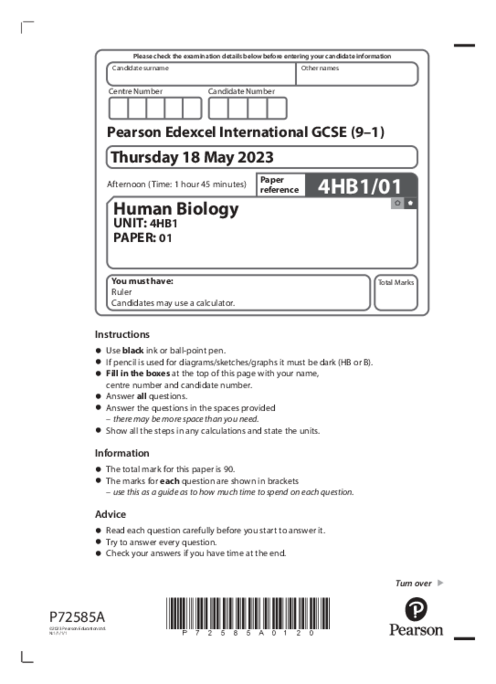Human Biology 4HB1/01 June 2023
omer uner
1. Transport mechanisms: diffusion along concentration gradient, osmosis of water across selectively permeable membranes, active transport using ATP against concentration gradient.
2. Respiratory physiology: air passage from nasal cavity to alveoli, alveolar adaptations (thin walls, large surface area), effect of increased CO₂ on tidal volume and breathing rate, oxygen uptake calculation.
3. Enzymes and experiments: time-dependent gas production by catalyzed reaction, trend analysis, competitive inhibitor impact on rate of reaction, accuracy improvements.
4. Eye anatomy and function: vision focusing via lens thickness and focal length, pupil reflex, types of cone cells (red, green, blue), color detection via wavelength absorption, lens shape in near vs distant focus.
5. Hygiene and sanitation: pit latrine structure and placement (downhill from wells), soil permeability, health protection via covers and long handles, antibacterial effectiveness investigation protocol.
6. Immune response and microscopy: phagocytosis stages, lysosome role, blood smear preparation and cell identification, ethical use of prepared slides over personal blood sampling.
7. Kidney function: GFR decline tracking over 9 years, dialysis threshold prediction, dietary protein control to reduce urea production and kidney strain.
See More Paper 1 6 months ago
Human Biology (4HB1) Subject directory
All resources in one place
Related Past Papers
Related Tutorials
Crash report

